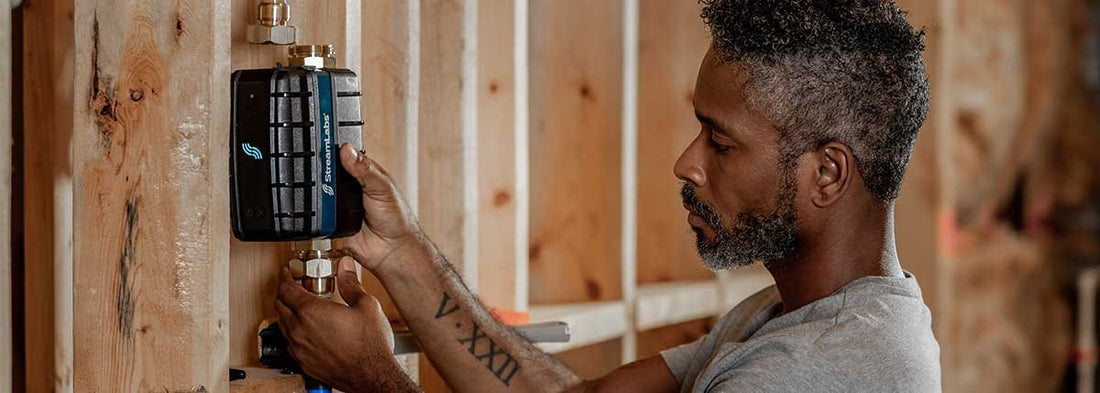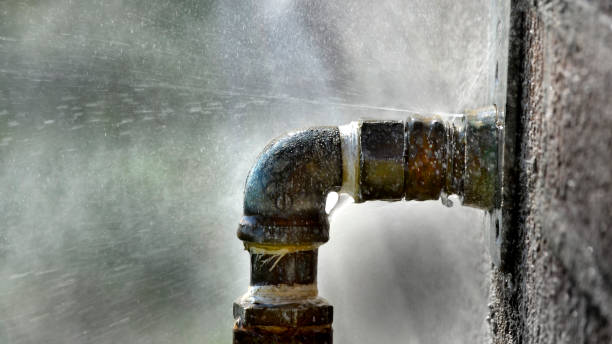The Duty of Advanced Innovation in Modern Leakage Detection Solutions for Reliable Solutions
In the realm of modern-day leakage detection services, advanced technology has ushered in a new period of efficiency and precision. The combination of IoT, wise sensing units, and cutting-edge techniques like acoustic detection and thermal imaging has changed exactly how leakages are determined and handled.
Development of Leak Detection Technology
The advancement of leak discovery technology is a testament to advancement and the relentless search of precision. Historically, the discovery of leaks, whether in pipes or industrial systems, counted heavily on basic and often ineffective techniques.
Over the years, innovations in modern technology have actually changed leakage detection into an advanced field. These sensors make use of a selection of methods, such as acoustic, infrared, and ultrasonic approaches, to identify leakages with remarkable precision.

Trick Advancements in Leak Detection
Recently, key innovations in leakage discovery have actually reinvented the sector, bringing unmatched precision and effectiveness to the leading edge. Among these advancements, the combination of IoT and smart sensors is significant, making it possible for real-time surveillance and data transmission. These tools are capable of finding minute modifications in stress and flow, allowing for rapid recognition of leaks before they intensify right into substantial problems.
Another crucial growth is the usage of acoustic leak detection modern technology - emergency leak detection. By employing highly sensitive microphones and advanced formulas, this approach can detect leaks based on sound patterns. This strategy is particularly reliable in recognizing leaks in complex piping systems where visual examination is impractical
Thermal imaging innovation has actually additionally made considerable strides, supplying a non-invasive method to spot leaks by recording temperature variations. This innovation is specifically valuable in spotting leakages in protected or underground pipelines, giving a clear aesthetic depiction of the problem.
Advantages of Modern Techniques
Modern leak discovery techniques use numerous advantages, considerably boosting operational performance and cost-effectiveness for organizations. Among the main benefits is the capacity to promptly and precisely determine leakages, reducing downtime and stopping extensive damage. By employing advanced technologies such as acoustic sensors, infrared thermography, and advanced information analytics, services can find leaks with precision, also in facility or unattainable systems.
These contemporary approaches also decrease labor costs and resource allotment. Traditional leakage detection commonly needed comprehensive excavation and handbook examinations, which were expensive and taxing. In comparison, non-invasive techniques enable for rapid assessments, decreasing the need for disruptive and expensive interventions. This shift not only saves economic resources but also decreases operational disruptions.
Additionally, the combination of smart innovation assists in constant monitoring and real-time information assessment, enabling aggressive maintenance strategies - slab leak detection. This anticipating approach aids companies attend to prospective issues prior to they escalate, hence guarding facilities and keeping service connection. By simplifying the discovery procedure, firms can assign sources a lot his comment is here more successfully, concentrating on repair services and system renovations instead of exhaustive search initiatives. visit the site Overall, modern-day leakage discovery techniques give a tactical benefit, equipping organizations to maximize their functional frameworks and achieve lasting sustainability.
Environmental Influence Mitigation

The combination of these modern technologies into leakage discovery services not only aligns with regulative compliance however additionally supports business duty initiatives intended at decreasing environmental footprints. Hence, progressed leak detection innovation is indispensable in promoting an extra sustainable and durable future.
Future Trends in Leakage Discovery
The future of leak detection technology promises transformative innovations that will certainly redefine industry requirements. As the need for efficient and sustainable facilities expands, the assimilation of cutting-edge innovations like fabricated knowledge (AI) and the Web of Things (IoT) is established to transform the area. These innovations will certainly allow real-time surveillance and anticipating maintenance, lowering the likelihood of leaks and lessening ecological impact.

Additionally, making use of drones outfitted with thermal imaging and advanced optics offers a non-invasive approach for checking hard-to-reach areas. This innovation not only boosts the precision of leakage detection but additionally ensures the security of workers by decreasing the need for hand-operated examinations in hazardous atmospheres.
Furthermore, developments in data analytics and cloud computing will help with the integration of leak discovery systems into broader property management systems, giving comprehensive oversight. These future patterns emphasize a change in the direction of more smart, automated, and lasting leak discovery services.
Final Thought
The combination of advanced modern technology in leakage discovery solutions represents a significant advancement in performance and precision. Real-time surveillance through IoT and wise sensing site web units, paired with methods like acoustic detection and thermal imaging, boosts system reliability and functional cost-effectiveness. Additionally, these technologies contribute to environmental protection by decreasing unsafe releases and supporting lasting resource administration. As modern technology remains to progress, future patterns will likely concentrate on additional enhancing these capacities, making certain more extensive and aggressive leak detection methods.
In the realm of contemporary leakage discovery solutions, advanced technology has actually ushered in a brand-new period of effectiveness and accuracy.Leveraging sophisticated technology in leak discovery not just enhances operational efficiency however also plays an important role in ecological effect mitigation. Early and specific discovery of leakages, facilitated by cutting-edge technologies such as acoustic sensing units, infrared imaging, and real-time surveillance systems, significantly minimizes the volume of harmful materials launched right into the atmosphere. The combination of these innovations right into leak discovery solutions not just straightens with regulatory conformity but likewise supports business obligation campaigns aimed at decreasing ecological footprints.The combination of sophisticated technology in leakage discovery services represents a significant advancement in effectiveness and precision.